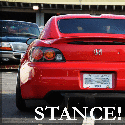Dual clutch transmissions
March 4, 2010

It’s one of the latest waves in motoring, and rightfully so. Automated dual clutch transmissions have been touted as the beginning of the end for the synchromesh manual and the automatic transmission. Or is it?
Dual clutch transmissions have appeared as various names (or acronyms) in different automobiles of several brands. Porsche was the one of the first to use the dual clutch concept with their race cars, known as Porsche-doppelkupplung (PDK), but only made its way into their showroom cars in 2008. The Volkswagen group has their Direct Shift Gearbox (DSG), known as S-Tronic for Audi. Rival BMW has their M-DCT, Ford has their new Power Shift while Nissan debuted theirs in the GT-R and Mitsubishi’s TC-SST was launched with the Evo X.
Regardless of the acronym conundrum, the principle stays the same: two independent, electronically-automated gearboxes, both with their own hydraulically-actuated clutches, housed as a single unit. The trick is that the first operates odd gears (1st ,3rd ,5th or more) while the second one operates the even-numbered cogs (2nd, 4th, 6th or more), feeding into coaxial input shafts, feeding into their respective concentric clutches and onto a single propeller shaft or trans axle or both.
Unlike a conventional automatic and a manual, a dual clutch tranny uses twin, concentric clutches (outer and inner) to engage /disengage the even/odd gears nearly simultaneously, nearly eliminating shift lag, power loss (through the torque converter which is designed for slippage for smoothness) and compromised fuel efficiency of regular automatics, the shift shock of manual transmissions, and the “unnatural” feeling of acceleration of a continuously variable transmission.
To better narrate the difference, a normal manual transmission under acceleration would require the driver to depress the clutch with his/her left foot, remove the current gear from its slot, select the next one, then release the clutch pedal to engage it as all gears share one clutch disc. Under the same conditions, a dual clutch transmission’s computer would already be spinning up the next gear, and simply disengage the current clutch and engage the other one simultaneously. No waiting. No problem.
Most dual clutch transmissions will also blip (rev-match) the throttle to ensure slick transfers while downshifting, drastically reducing the nauseating engine-brake common to inexperienced (rough with the throttle) drivers. It also has the advantage of having the ability to handle higher horsepower applications than a conventional A/T, thanks to its use of more robust wet multi-plate clutches (lubricated to limit excess friction and heat) instead of a torque converter, the latter being prone to power loss and overheating.
Manufacturers have also implemented ancillary electronics to adjust the shifting pattern of the transmission for the driver’s desired conditions from comfort/normal or sport. In comfort (or similar mode), the transmission will simulate the smoothness of a conventional automatic, sacrificing performance for a smoother drive. In sport mode, the tranny will behave like a manual, trading comfort for speed and aggression, hence is suitable for frisky driving up in the mountains or on a racetrack. All while keeping both hands on the wheel, allowing you to focus on steering work and leave the shifting to a machine, unless you choose to select gears yourself via paddles behind the steering wheel or +/- selectors on the shift knob.
The dual clutch transmission is not without its drawbacks of course. For one, the technology is still relatively new, hence, expensive for the manufacturer to modify their tooling for production, hence, more expensive for the end-user. It usually adds a significant premium to a car’s price. Second (and this is just hypothesis) due to the complexity of the system, there are more possible areas for wear and tear, will likely be more costly to maintain and repair compared to manuals and regular automatics. Add to the fact that dual-clutch transmissions are commonly used for high-horsepower engines on high-performance cars meant to be driven hard and fast, then that risk could increase a bit more.
So will the highly advanced, best-of-both-worlds dual clutch transmission replace the synchromesh manual, conventional automatic and continuously variable transmission?
Well, back in the 1950′s and 60′s, it was common thought that we’d be living off of terra firma by now due to the pace of progress and innovation. Or, to hit closer to home, that internal combustion would already be phased out or that cars will drive themselves. In that light, I’d have to say no.
Dual clutch transmissions represent the next logical step in motoring; not so much to revolutionize the way we drive cars, but to maximize the potential of the current crop. That is, after all, the whole idea.















 Categories
Categories Archives
Archives
 Pages
Pages Links
Links
[...] [...]